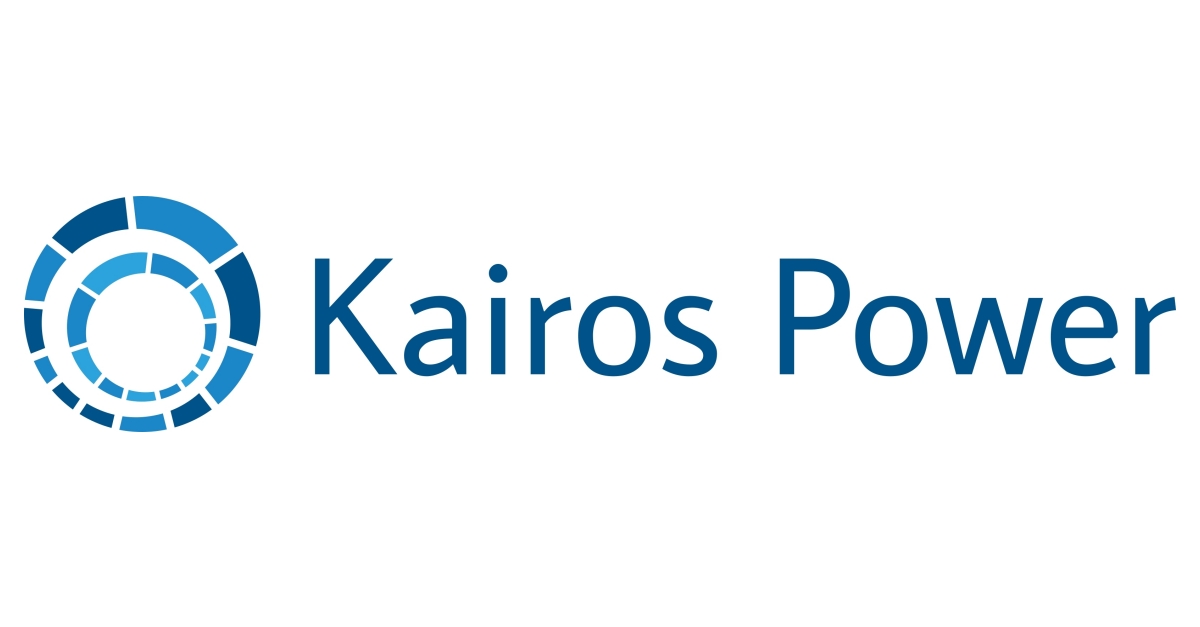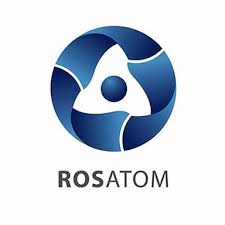The U.S. Nuclear Regulatory Commission (NRC) has just finished its Final Environmental Impact Statement (FEIS) on Kairos Power’s application for a construction permit for the Hermes demonstration molten salt reactor at Oak Ridge, Tennessee. The NRC have recommended that the permit should be issued.
Kairos submitted it permit application in two parts in September and October of 2021. The company began extensive pre-application engagement with the NRC in 2018. The NRC accepted Kairos’ Hermes construction permit application (CPA) for review in November of 2021.
Last June, the NRC issued a Final Safety Evaluation Report (FSER) for the Kairos application. The NRC concluded that there were no safety aspects that would preclude issuing a construction permit for the Hermes reactor.
The NRC weighed the facility’s environmental, economic, technical, and other benefits against environmental and other impacts. The NRC staff have now issued the FEIS, also recommending that the permit should be issued.
Kairos said that “This is the final document from NRC staff to support the commission hearing planned later this year and marks the formal conclusion of the environmental review for the Hermes construction permit application.”
The NRC staff will provide the FEIS and FSER to the NRC for the mandatory hearing phase of the project. The hearing is expected to take place later this year. After the hearing, the NRC will vote on whether to authorize the staff to issue the permit.
Marty Bryan is the Kairos Site Licensing Manager. He said that “We are grateful to the NRC staff for their thorough review and comprehensive engagement with us and with local stakeholders.”
Darrell Gardner is the Senior Licensing Director at Kairos. He said, “The FEIS follows extensive engagement between Kairos Power and the NRC beginning in 2018. It builds upon selecting and characterizing an appropriate site for Hermes, engaging with the local community, and continuously communicating with stakeholders. We applaud the staff’s steady progress toward closing out the Hermes CPA review and look forward to completing the mandatory hearing later this year.”
Kairos will have to submit a separate application for an operating license. It will have to receive approval from the NRC before operating the Hermes reactor.
Hermes is a thirty-five-megawatt thermal non-power version of the company’s fluoride salt-cooled high temperature reactor called the KP-FHR. It uses TRI-structural ISOtropic (TRISO) fuel pebbles with a low-pressure fluoride salt coolant. The demonstration Hermes reactor has been selected by the U.S. Department of Energy to receive six hundred and twenty-nine million dollars in cost-shared risk reduction funding over several years under the Advanced Reactor Demonstration Program. It is intended to provide operational data to support the development of a larger version for commercial deployment.
A site in the East Tennessee Technology Park in Oak Ridge has been selected for the demonstration reactor. The TRISO fuel pebbles will be produced at the Los Alamos National Laboratory’s Low Enriched Fuel Fabrication Facility under an agreement announced in late 2022. Kairos has also commissioned a plant to produce a high-purity fluoride salt-coolant known as Flibe in partnership with the Materion Corporation.
Last month, Kairos submitted an application to the NRC for permission to construct the Hermes 2 plant next to the Hermes reactor at Oak Ridge. The Hermes 2 plant will consist of two thirty-five megawatt thermal reactors. Each of these reactors will be the same size as the original test reactor and they will share a power generation system. The Hermes 2 plant will generate and sell electricity. The NRC is currently assessing that application to determine if it is acceptable and complete enough to start the formal technical review process.
Blog
-

Nuclear Reactors 1263 – Kairos Power Is Receiving LIcenses From The NRC To Construct And Operate Their Hermes Molten Salt Reactor
-
Links for 03 Aug 2023
China’s imports of Russian nuclear materials hit record-high in 2022 english-kyodonews.net
Expert Warns US Nuclear Agency’s ‘Reckless’ New Rule Will Weaken Emergency Safety commondreams.org
Susquehanna Nuclear to test emergency sirens, potassium iodide tablets to be distributed fox56.com
If Israel strikes Iran over its nuclear program, the US must have its back thehill.com
-

Radioactive Waste 913 – Poland Seek Municipality To Construction A Repository For Low and Intermediate Level Radioactive Waste
Poland currently operates a single research reactor called Maria. It has no operational nuclear power plants. It is going to start construction of a plant with three Westinghouse AP1000 reactors in 2026. Poland also intends to build small modular reactors.
Poland’s Ministry of Climate and Environment (MCE) is currently seeking municipalities interested in participating in the process of selecting a site for a new surface repository for the disposal of low and intermediate-level short-lived radioactive waste.
The new facility is intended solely for the storage of low and intermediate-level waste and radioactive sources from nuclear power, industry, medicine and research and development in Poland. The new repository will not accept high-level waste or spent nuclear fuel. These require the construction of an underground facility with completely different characteristics and a different location.
The MCE said that during the construction of the new repository, it will use the experience gained during the operation of the existing National Radioactive Waste Repository (NRWR) in Różan. They added that the repository will “follow the example of proven facilities of this type operated in Spain (El Cabril) or France (Aube)”.
Zakład Unieszkodliwiania Odpadów Radiotworniczych (ZUOP) is a state-owned public utility. It is responsible for the proper handling of radioactive waste from the moment it is taken over from the producer. ZUOP will be the primary investor and operator of the repository.
Preference will be given to municipalities with an area of about one hundred hectares for the construction of a landfill and auxiliary facilities. But the area must meet certain specific requirements. These requirements include the following items. The repository must be located at least thirty miles from the Polish land border. It must be in an area where there are lands of low production quality. It cannot be located within areas such as national parks or nature reserves. It cannot be within populated areas. And, finally, it must not be in areas prone to earthquakes, subsidence or flooding.
The ZUOP mentioned that the municipality where the new repository will be located will be entitled to an annual fee from the state budget. This fee will be paid from the date of acceptance of the first radioactive waste to the repository until the decision to close the repository. The fee will be four hundred percent of the income from the real estate tax located in the area obtained in the previous year. It will not be more than two and a half million dollars.
Municipalities have until November 15th to apply to participate in the selection process. However, the ZUOP stated that the “The deadline for submitting municipalities may be extended”.
The ZUOP added that “The selection of the best location for the construction of the repository will take place after obtaining the approval of the local community for this investment and conducting geological and geophysical research, which will allow the assessment of the suitability of these areas for the implementation of the investment in accordance with the criteria set out in the Atomic Law.” -
Links for 02 Aug 2023
Rooppur fuel passes inspection as onsite work progresses world-mclear-news.org
Fukushima nuclear disaster: Activists march against Tokyo’s waste plan bbc.com
Iran reportedly slowing some nuclear enrichment, diluting high-grade stockpile timesofisrael.com
Israel: US-Iran deal will not stop nuclear program, help fund terror jpost.com
-

Nuclear Fusion 43 – The Princeton Plasma Physics Laboratory Is Working One New Mathematics For Stellarator Development
Nuclear fusion is a potential source of clean electricity that could have a myriad of uses that could help mitigate climate change. Fusion releases huge amounts of energy by combining light elements in the form of plasma. Plasma is the hot, charged state of matter composed of free electrons and atomic nuclei that makes up ninety-nine percent of the visible universe. Laboratories around the world are working on harnessing fusion reactions to create a virtually inexhaustible supply of safe and clean power to generate electricity.
Stellarators are twisty devices designed to reproduce the fusion energy that powers the sun and stars. They primarily rely on external magnetic fields to confine a plasma. The stellarator was invented by American scientist Lyman Spitzer of Princeton University in 1951. Much of its early development was carried out by his team at what became the Princeton Plasma Physics Laboratory (PPPL). PPPL has been working for over fifty years on developing the theoretical knowledge and advanced engineering to enable fusion to power the U.S. and the world.
Early in the development of stellarators, technical problems convinced researchers that they were not a viable route to commercial fusion. Research interest shifted to tokamaks instead. However, in time, tokamaks encountered serious technical problems and interest shifted back to stellarators. Stellarators can operate without the risk of damaging disruptions that doughnut-shaped fusion reactors called tokamaks encounter.
Scientists at the U.S. Department of Energy’s (DOE) Princeton Plasma Physics Laboratory (PPPL) have found a mathematical shortcut that could help harness nuclear fusion for energy production on Earth. The new methodology permits researchers to more easily predict how well a stellarator can retain the heat crucial to fusion reactors.
The new technique measures how well a stellarator’s magnetic field can hold on to the fastest-moving atomic nuclei in the hot plasma. This is critical to boosting the overall heat and aiding the fusion reactions. The main question is how scientists can find a shape that holds in as much the heat as possible.
Alexandra LeViness is a graduate student in plasma physics at the PPPL. “This research shows that we can find the best magnetic field shape for confining heat by calculating something easier—how far the fast particles drift away from the curved magnetic field surfaces in the center of the plasma. This behavior is described by a number known as gamma C, which we discovered consistently corresponds with plasma confinement.” LeViness added that the shortcut advances future stellarator research. He went on to say that “because the more fast-moving particles that stay in the center of the plasma, the hotter the fuel and the more efficient the stellarator will be.”
Elizabeth Paul is an assistant professor of applied physics at Columbia University and a former presidential fellow at Princeton University. She said, “But using techniques like the one LeViness studied, we have been able to find magnetic configurations for stellarators that contain heat as well as tokamaks can. It’s more challenging for stellarators, but LeViness has helped show that it’s possible. -
Links for 01 Aug 2023
Rooppur fuel passes inspection as onsite work progresses world-mclear-news.org
Fukushima nuclear disaster: Activists march against Tokyo’s waste plan bbc.com
Iran reportedly slowing some nuclear enrichment, diluting high-grade stockpile timesofisrael.com
Israel: US-Iran deal will not stop nuclear program, help fund terror jpost.com
-

Nuclear Fusion 42 – Rosatom Providing First Wall Panels To ITER Project
The International Thermonuclear Experimental Reactor (ITER) is a project to construct a prototype of a fusion reactor. Thirty-five different countries are collaborating to build ITER. The European Union (plus Switzerland and the U.K.) are contributing almost half of the cost of its construction. Six other members of the collaboration are contributing equally to the rest of the cost. Construction began in 2010 and continues in Cadarache, southern France. There have been delays caused by technical problems. Many of the members are constructing components for the ITER and there have been problems integrating these diverse components into the ITER.
ITER is a major international project to construct a tokamak fusion device designed to prove the feasibility of fusion as a large-scale and carbon-free source of energy. The goal of ITER is to operate at five hundred megawatts for at least four hundred continuous seconds with fifty megawatts of plasma heating power input. It appears that an additional three hundred megawatts of electricity input may be required when the ITER is in operation. No electricity will be generated at ITER.
The St Petersburg-based JSC NIIEFA is part of the Russian state nuclear corporation Rosatom. It has started acceptance tests of a full-scale prototype of the first wall panel for the ITER project.
The first stage of the acceptance testing was the measurement of the geometric parameters of the prototype. These tests are carried out using an optical scanning machine. The purpose of these measurements is to check the compliance of the product with the drawings. They will also build a 3-D model with real dimensions based on the data collected.
At the headquarters of the ITER Organization, the 3-D model will be integrated into the overall virtual assembly of the reactor to check compatibility with other components. The prototype of the first wall panel will undergo static and dynamic hydraulic tests. There will be a hot helium leak test by the end of this year. Based on the results of the acceptance tests, the ITER Organization will decide on the transition to serial production of the first batch of wall panels.
According to Rosatom, the panels of the first wall of the reactor are “one of the most important and technically complex components” of ITER. Along with the diverter, the wall panels are in direct contact with the hot plasma. Each panel consists of forty “fingers”. Each finger is a complex multi-layer construction of sixteen-millimeter by sixteen-millimeter beryllium cubes soldered onto copper-chromium-zirconium alloy. The alloy is bonded to the steel base by diffusion welding. Each panel measures about two meters by one and a half meters by one half meter. They weigh about eighteen hundred pounds. The panels have different shapes. The scientists of JSC NIIEFA have developed forty versions of their design.
In the ITER project, Russia’s responsibilities include the construction of one hundred seventy-nine of most energy intensive panels which will be subjected to up to five megawatts per square meter in the first wall. This section is forty percent of the total area of the reactor wall. -
Links for 31 Jul 2023
Russia deploys feared Chechen unit to police Ukrainian nuclear town Aljazeera.com
The Threat of Nuclear War stabroeknews.com
Biden seeks to assist New Mexico residents sickened by nuclear testing radiation foxnews.com
Work continues at Dasa as Niger ‘relatively calm’ world-nuclear-news.org
-
Links for 30 Jul 2023
Sweden criticized over plan to build at least 10 new nuclear reactors theguardian.com
Iran moves closer toward possible nuclear weapons test – European intel jpost.com
Prisoner Deal Could Smooth Effort to Contain Iran’s Nuclear Program nytimes.com
Putin Profits Off US, European Reliance on Russian Nuclear Fuel voanews.com
-
Links for 29 Jul 2023
Uganda / Russia And South Korea Will Provide Country’s First Nuclear Reactors, President Says nucnet.com
Pritzker vetoes bill that lifted moratorium on new nuclear power stations hometownregister.com
Nuclear Reactor Decommissioning market is projected to grow at a CAGR of 2.5% by 2033: Visiongain finance.yahoo.com
Core module installed at Chinese SMR world-nuclear-news.org
